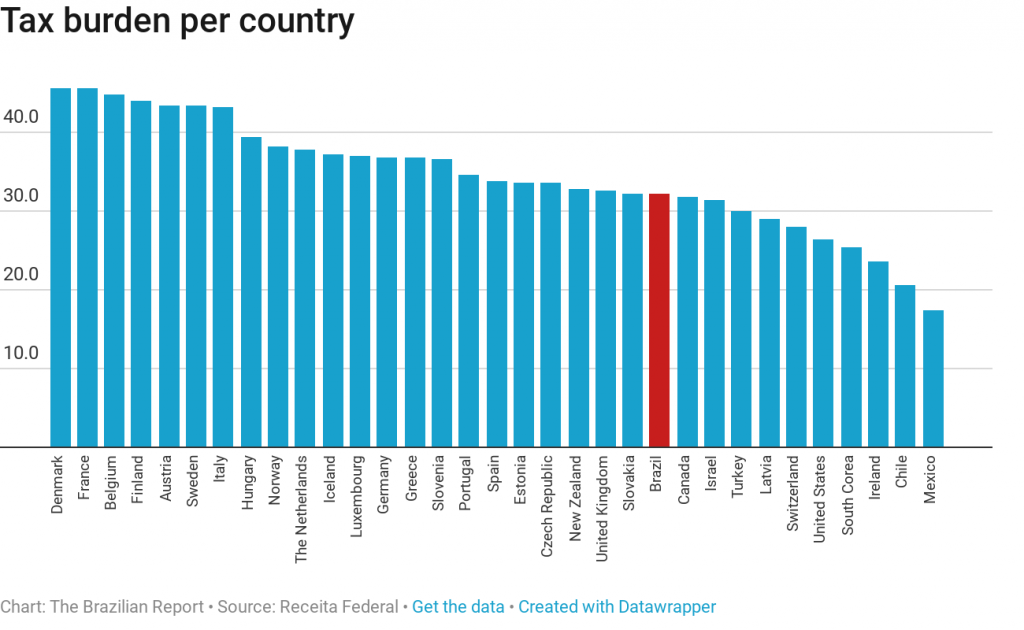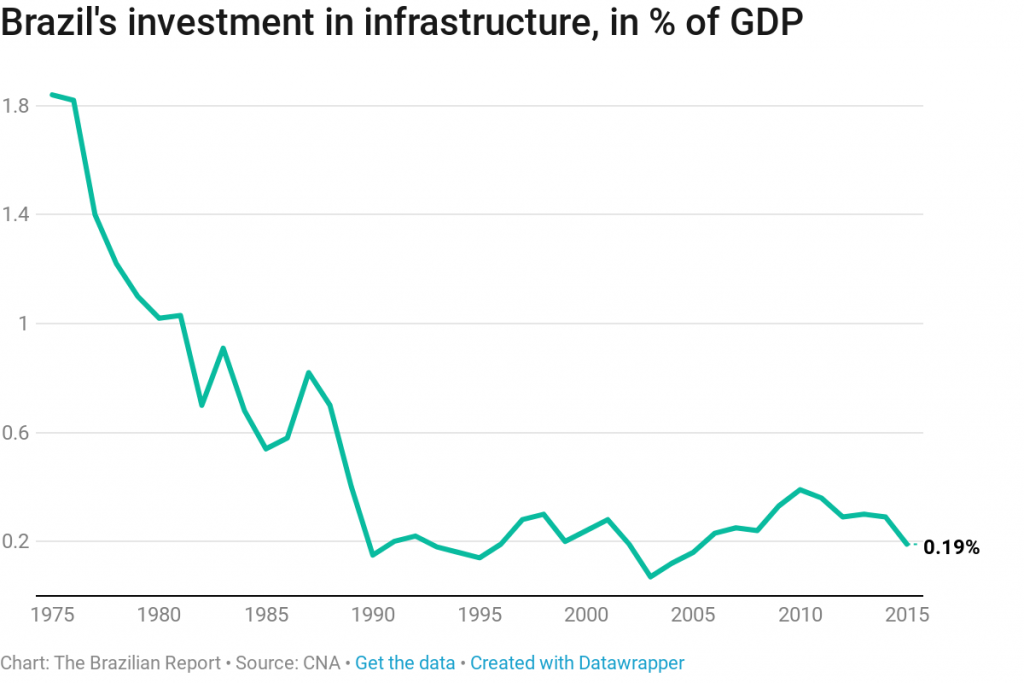In 2017, Brazil fell 17 positions in Transparency International’s corruption ranking, down to 96th. Educational costs range from monthly BRL 340,00 (preschool) to BRL 713,64 (college monthly tuition). Therefore, a large portion of Brazilian society is charged twice. But for that to happen, macro and business environments must be attractive enough for private enterprises. That places Brazil as the sixth-most expensive entry in a ranking of 58 countries, tied with Italy and France, and leaving behind places known for their high living costs, such as Denmark. No wonder freight prices are such a hot-button issue between truckers and producers. The National Confederation of Industry (CNI) produced a report on the country’s competitiveness, comparing it to 17 other nations. Mr. Souza Júnior argues that this can be done with relatively simple decisions by the government. In short, the “Brazil cost” is the result of a complex combination of a lack of infrastructure and low productivity, which increase production costs, high interest rates, and taxes. As you can see, there is no shortage of examples on how expensive life in Brazil can be. In Salvador, it is possible to rent a two-bedroom apartment in an upscale neighborhood per BRL 1265,75 a month and the same apartment per BRL 631,52 in a more affordable area of the city.
Bentes highlights the high correlation between education and productivity. The deadlock
The figure is three times larger than that measured in Canada, the top-ranked country.
That places Brazilians in the 50th position in a ranking of 68 countries. 

Especially for those working for minimum wage, which currently stands at BRL 954 – around USD 250 – per month. Over the past decade, the federal administration invested an average of 0.3 percent of the country’s GDP in infrastructure every year, while other exporting countries such as China, India, and Russia annually devoted about 10, 8, and 7 percent, respectively.
The National Confederation of Industry (CNI) produced a report on the country’s competitiveness, comparing it to 17 other nations. This is already a lot by international standards, but it pales in comparison to credit cards, for which banks charge 311.9 percent from their Brazilian customers.
In infrastructure and logistics, Brazil ranks 17th, behind economies such as India, Peru, and Mexico.A study from CNI highlights that the country had the highest interest rate and banking spread as of 2016. The average price for a two-bedroom apartment in an upscale neighborhood is of BRL 1.199,43 and of BRL 457,88 in a more affordable area.